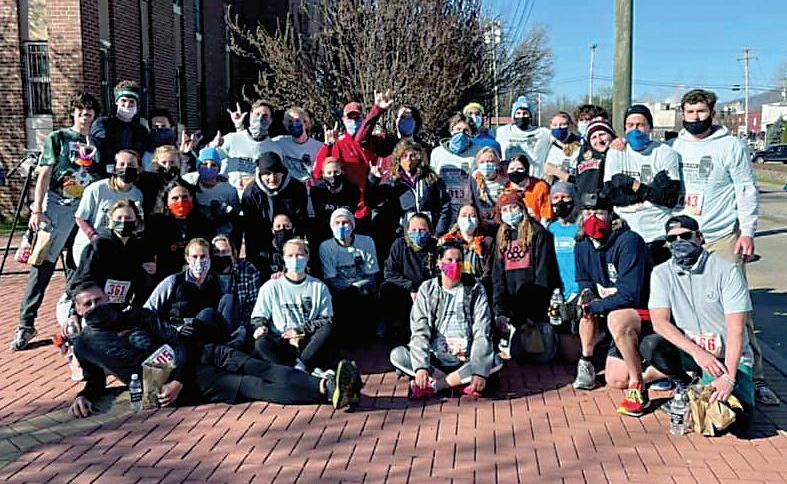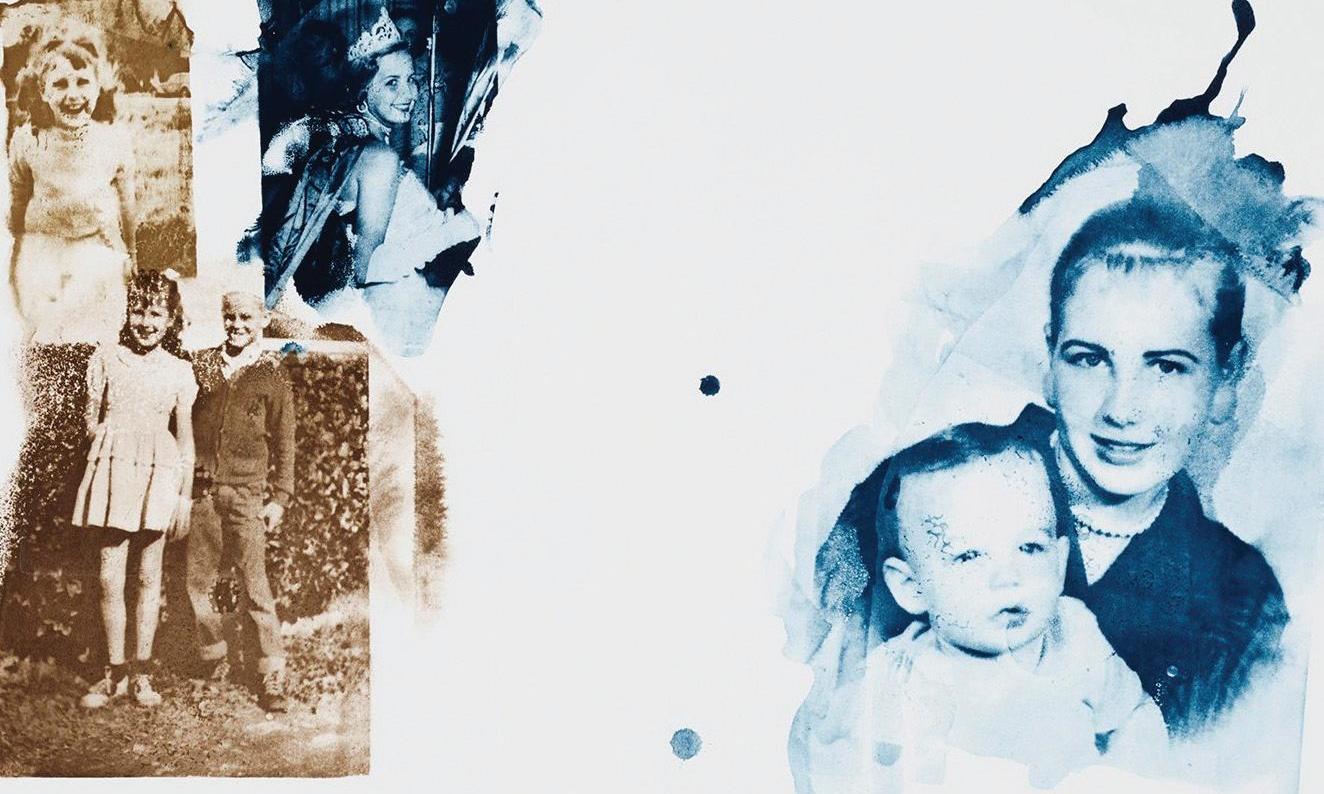
24 minute read
New art exhibit shines light on Black Mountain College
Robert Rauschenberg, ‘Bubba’s Sister from the Ruminations.’ Below: Joseph Fiore, ‘Black Mountain Lake Eden.’
BY GARRET K. WOODWARD ARTS & ENTERTAINMENT EDITOR
From 1933-1957, Black Mountain College was formed and thrived within the context of its seemingly unconventional methods and ways, only to simply disappear — into the history books of the town it was named after, into the fond memories of those who passed through the magical space along their respective paths in life.
“There’s been a bit of a Renaissance in the last 15-20 years in the interest in the history of Black Mountain College,” said Hilary Schroeder, assistant curator at the Asheville Art Museum.
Leaps and bounds ahead of its time, even by many of today’s academic standards, the experimental liberal arts institution was a haven for cutting edge artists and the curious alike from around the country — complete creative and spiritual freedom to be “you” and “me,” right in the heart of Western North Carolina.
“[Black Mountain College] is only just now starting to come into a lot of art history curriculums,” Schroeder said. “There’s a whole new generation of folks looking at it through a perspective of the arts, but there’s also political engagement and education research on it because it was so progressive in terms of education.”
Titled, “Connecting Legacies: A First Look at the Dreier Black Mountain College Archive,” the exhibition will run through May 17 at the museum. Made up of over 1,000 artworks and other documents, the exhibit not only showcases the rich, vibrant art and innovative artisans that once roamed the campus, it also provides an unbreakable tether to where we stand today in the ever-evolving culture of Asheville and greater Southern Appalachia.
Artists featured in the showcase include Lorna Blaine Halper, Ruth Asawa, Hazel Larsen Archer, Elaine Schmitt Urbain, Warren “Pete” Jennerjahn, John Urbain, Joseph Fiore, Ray Johnson, Barbara Morgan, Anni Albers, and more.
“In this exhibit, we’re really trying to focus on not just the folks everyone knows, but additionally artists who had really amazing careers that aren’t household names yet,” Schroeder said. “And we talk a lot about the legacy of Black Mountain College, so it’s amazing to be able to track it through basically when an artist was there right through the end of their careers.”
Aside from its avant-garde artistic pursuits, Black Mountain College was steadfast and pioneering in its equal schooling and academic opportunities for women and people of color.
Most notably, Alma Stone Williams became the first African American admitted to the institution in 1944, just about a decade preceding the Brown vs. Board of Education Supreme Court Ruling. The next year, the school invited musicians Roland Hayes and Carol Brice to become its first African American faculty members.
“There’s an ethos that we really try to emulate in our exhibitions and in our collecting strategies at the [Asheville Art Museum], and I think we often look to Black Mountain College for inspiration [in doing so],” Schroeder said. “We certainly acknowledge its influence on the area — and even though we collect more broadly — it encourages us to look at what’s happening right now in Western North Carolina, too.”
Within the endless archive of artwork, photographs, letters and other materials, the museum was able to acquire much of the collection from the family of BMC founder, the late Theodore Dreier. Of which, many of the piece will be permanently housed at the museum once the exhibit concludes in mid-May.
“The documents and furniture [in the exhibition] from the Dreier family was just up in their family home in Martha’s Vineyard, [Massachusetts],” Schroeder said. “It’s been in their possession all these years and they wanted to place it some sort of public trust, and we were selected to receive the gifts — there’s just something so exciting about being able to have [and research these materials] so close to the place that it all happened.”
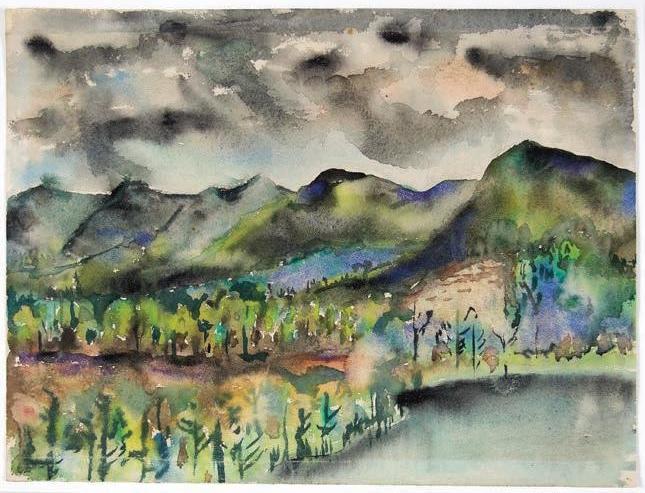
Want to go?
The exhibit “Connecting Legacies: A First Look at the Dreier Black Mountain College Archive” will be showcased through May 17 in the Van Winkle Law Firm Gallery at the Asheville Art Museum (located in Pack Square).
To reserve your tickets for admission (which is limited due to current safety protocols) and/or to learn more about the showcase, go to www.ashevilleart.org/blackmountain-college/connecting-legacies.
For more on the Asheville Art Museum, simply click on www.ashevilleart.org.
— Hilary Schroeder, assistant curator at the Asheville Art Museum
BY GARRET K. WOODWARD
I never ever saw the stars so bright, in the farmhouse, things will be alright
It was a flood of memories I hadn’t thought of in years. There I was on a date with this girl the other day. She works in town, not far from my apartment. A casual conversation turns into a casual drink. Kind of nice to have that rare interaction these days amid “all this,” truth be told.
She’s from the Piedmont region of North Carolina. A self-proclaimed “hippy cowgirl,” she grew up on a farm. A real deal farm family. Six hundred or so head of cattle. Horses. Goats. Dogs. Cats. Ducks. Pigs. All kinds of shiny, expensive equipment to milk the cows and plow the fields. Open air and vast meadows as far as the eye could see.
By the second drink of the casual conversation at the neighborhood bar in downtown Waynesville, I started to tell some tales of my own, days long gone, but not forgotten, roaming around the farms and fields of my native North Country (Upstate New York/Vermont).
I grew up on the far western edge of Rouses Point, New York. A town about the size of Bryson City, it was the largest village on the Canadian Border in that area, a mile from the international boundary, a mile from Vermont, along the shores of the majestic Lake Champlain.
My childhood home was an 1820 limestone farmhouse (once a working dairy). Behind it a large barn with slate shingles on the roof. Filled with bales of hay and rusty farm equipment, it also housed our horse, Branches, as well as numerous cats and dogs that would roam the seven-acre property (which was surrounded by thousands of acres of endless cornfields).
Located at the end of Smith Street, my driveway was where the streetlights stopped, the good pavement ended, and the smell of manure began. At night, if you looked east from my backyard, you could see the bright lights of the small town, of the (nowdefunct) pharmaceutical factory that employed most of the community.
But, if you looked west, all you saw was a dark abyss. No lights, maybe just a random floodlight from some barn in the distance. But, otherwise, no light pollution. No noise. No people. No distractions. To which, my father and I would take our dogs for walks at night along those quiet farm roads, where he’d point out the constellations to me. The night sky was never as bright in my youth as it was on those walks.
Those farm roads still haunt my dreams. Roads seemingly to nowhere. Broken pavement. Gravel. Dirt. I’d lace up my running shoes in middle and high school, bolting down those routes. Miles and miles. Sometimes in the blazing hot summer when the corn was just starting to emerge from the earth. Sometimes in the early fall, the corn now taller than me and ready to be harvested.
Sometimes in the depths of winter, 20 below zero and bundled up in several layers to combat a fierce Arctic wind blowing across the empty fields. It was those icy jogs that were my favorite. Total silence. Just the sounds of your breathing and shoes crunching atop the slippery trek. You’ve never been so cold in your life, but you somehow push through — all while this crazy vibration of time and place echoes through your heart and soul.
And the people. All of those childhood friends of mine whose farms I’d find myself frolicking about on. Shenanigans. Stealing cheap Canadian beers from the barn fridge and wandering the back fields (“back forty”) and tree lines. Kicking rocks down dirt paths through the woods. Watching the cows run across the horizon in search of their dinner back at the barn.
The old Tacoma in the North Country.

Step into the barn, amid the milking lines, the endless chores to just keep the whole thing running efficiently, or at least for today (tomorrow is always another story). Help feed the animals. Find the wrench or tools that’s desperately needed.
Wipe your sweaty brow and grin in awe of the scene before you. Shake hands with the farmhands and old-timers, salt of the earth ancient souls who have probably seen and felt more than you’ll ever know.
Unforgettable sunrises and sunsets. Brutally hard work to just simply keep your head above water. The undying passion for the land and what it produces. Day in and day out. Onward into the unknowns of the seasons. What may or may not be in your favor. And how best to bounce back from it. Fingers crossed. God willin’ and the creek don’t rise, eh? Admiration remains in great supply for these figures.
These days, I still have personal ties up in that small town on the Canadian Border. Little sister and her family are there. My parents not far down the road, either. Several old cronies from my youth have now taken over their family farms, raising beef cattle or making maple syrup (or both). I’m proud of them all, if anything for keeping the spirit of the place alive and in good hands — deep roots never to be ripped up by those harsh, unforgiving Arctic winds.
And in those rare moments where I find myself physically back in that place, I’ll jump into my old Tacoma and cruise the backroads, this unrolling landscape of pure silence and thoughts provoked, of endless cornfields and dirt roads, and of fleeting sunsets — all eventually finding its way into my restless slumbers in the mountains of Southern Appalachia.
Life is beautiful, grasp for it, y’all.
• Balsam Falls Brewing (Sylva) will host an open mic from 8 to 10 p.m. every Thursday.
Free and open to the public. www.balsamfallsbrewing.com.
• The Classic Wineseller (Waynesville) will host Jacob Johnson (singer-songwriter) April 17. All shows begin at 6:30 p.m.
Reservations required. 828.452.6000 or www.classicwineseller.com.
• Elevated Mountain Distilling Company will host semi-regular live music on the weekends. Free and open to the public. www.elevatedmountain.com. April 16. All shows begin at 6 p.m. Free and open to the public. www.froglevelbrewing.com.
• Lazy Hiker Brewing (Franklin) will host Shane Meade (singersongwriter) April 10 and Dirty Dave April 17. All shows begin at 8 p.m. unless otherwise noted. Free and open to the public. www.lazyhikerbrewing.com.
• Lazy Hiker Brewing (Sylva) will host Arnold
Hill (rock/indie) April 9. All shows begin at 8 p.m. unless otherwise noted. Free and open to the public. www.lazyhikerbrewing.com. Corbitt (soul/acoustic) April 10. All shows begin at 8 p.m. Free and open to the public. www.nantahalabrewing.com.
• Smoky Mountain Event Center (Waynesville) will host a drive-in show with Papadosio (jam/fusion) 6 p.m. April 9-10. For more information and/or to purchase tickets, go to www.ashevillemusichall.com.
• Water’n Hole Bar & Grill (Waynesville) will host Joel Parisoe 3 p.m. April 11. 828.456.4750 or www.facebook.com/waternhole.bar.
ALSO:
• The “Uncorked: Wine & Rail Pairing
Experience” will be held from 10:30 a.m. to 2:30 p.m. on select dates at the Great Smoky
Mountains Railroad in Bryson City. Full service all-adult first class car. Wine pairings with a meal, and more. 800.872.4681 or www.gsmr.com.
• Stecoah Valley Cultural Arts Center announced Jennifer West as the interim executive director, effective April 1. West previously served as assistant executive director since January 2017. 828.479.3364 or jennifer@stecoahvalleycenter.com.
Arnold Hill to play Lazy Hiker

Americana/rock act Arnold Hill will be hitting the stage at 8 p.m. Friday, April 9, at Lazy Hiker Brewing in Sylva.
With its recent debut album, “Back to Life,” Arnold Hill sets to change the tone and tempo of what folks might expect on a given night onstage at their nearby bars and breweries in our mountain communities.
Formed in 2011, the Jackson County band is named after a road in Sylva where the musicians lived and practiced. In method, Arnold Hill adheres to the playful nature and creative possibilities that reside in a trio.
The unique formation can be a tricky line to balance, where you have enough space to explore musically, but also the same amount of space to expose vulnerabilities.
The show is free and open to the public. www.arnoldhillband.com. Purchase “Back to Life” on all online streaming services.
Drive-in series returns
Hosted by the Asheville Music Hall, the 2021 drive-in concert series will kick off with a special two-night performance by popular jam/fusion act Papadosio at 6 p.m. April 9-10 at the Smoky Mountain Event Center (aka: Haywood County Fairgrounds) in Waynesville.
The show will celebrate not only the 15th anniversary of the inception of Papadosio, but also the 10th anniversary of the Asheville Music Hall.
One- and two-day car passes are now available for purchase. These performances will follow any and all local/state Covid-19 safety protocols. All concerts are sociallydistant.
For more information on this show and others in the drive-in series (and to buy tickets), visit www.ashevillemusichall.com and click on the “Live Music Calendar” tab.
Pasquale LaCorte as George Burns.

HART Theatre reopens
Waynesville’s beloved Haywood Arts Regional Theatre will open its doors again to the public, beginning April 8 with the one-man show “Say Goodnight, Gracie” starring Pasquale LaCorte as George Burns.
The production is being staged in the Fangmeyer Theater, with CDC protocols in place. The flat floor of the theater makes it possible for patrons to be in pods spaced six feet apart.
Patrons will be asked to wear masks unless they are eating or drinking items from the concession area, and distancing will be practiced throughout the facility. HART has created a special Covid Safety Video to give patrons a sample of what attending the show will be like. To view it, simply go to www.harttheatre.com.
“Say Goodnight, Gracie” is an evening with one of the entertainment industry’s most celebrated figures. George Burns lived to be 100 years old and was a major star until he died. He performed in Vaudeville in the 1920s and in the 1930s he teamed up with Gracie Allen, whom he would eventually marry. The two became stars of film and radio, and eventually had a successful television show in the 1950s.
The show offers an unforgettable tour through a century of entertainment. Audiences will be transported with treasured video clips, audio and pictures from the life of these comic icons.
The show has performances at 7:30 p.m. April 8-10 and 15-17 and 2 p.m. April 11 and 18. All seats are $20 general admission.
To make reservations call the HART Box office at 828.456.6322 at any time and simply leave your name, phone number, the number of tickets you would like held and the performance date on the recording. Door opens 30 minutes prior to the performance.
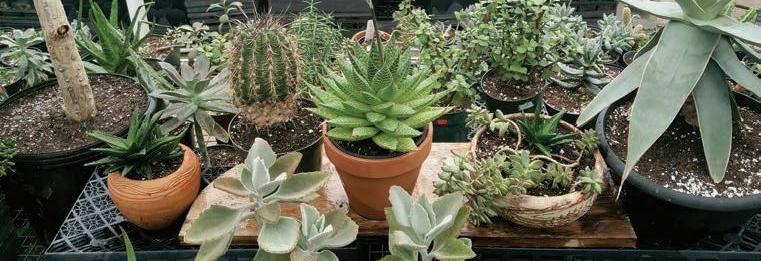
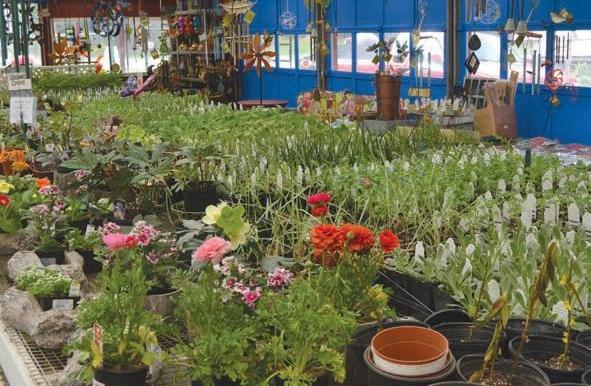

Anniversary sale going on now! APRIL 5-10

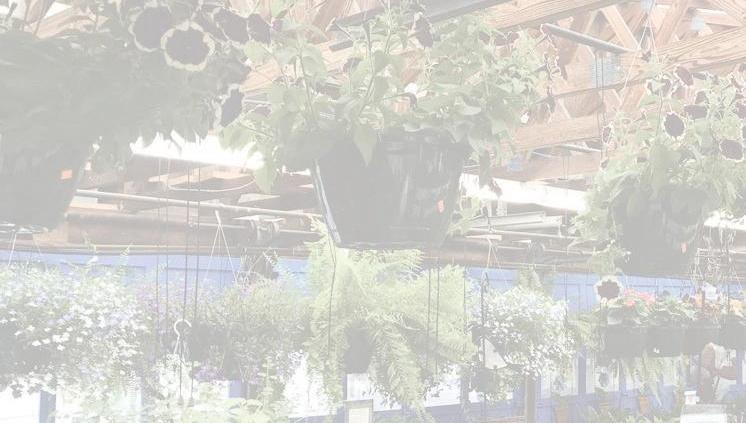

MONDAY - SATURDAY 11-4PM Storewide plant sale, drawings and fun gifts! 1856 DELLWOOD ROAD, WAYNESVILLE • 828-926-1901
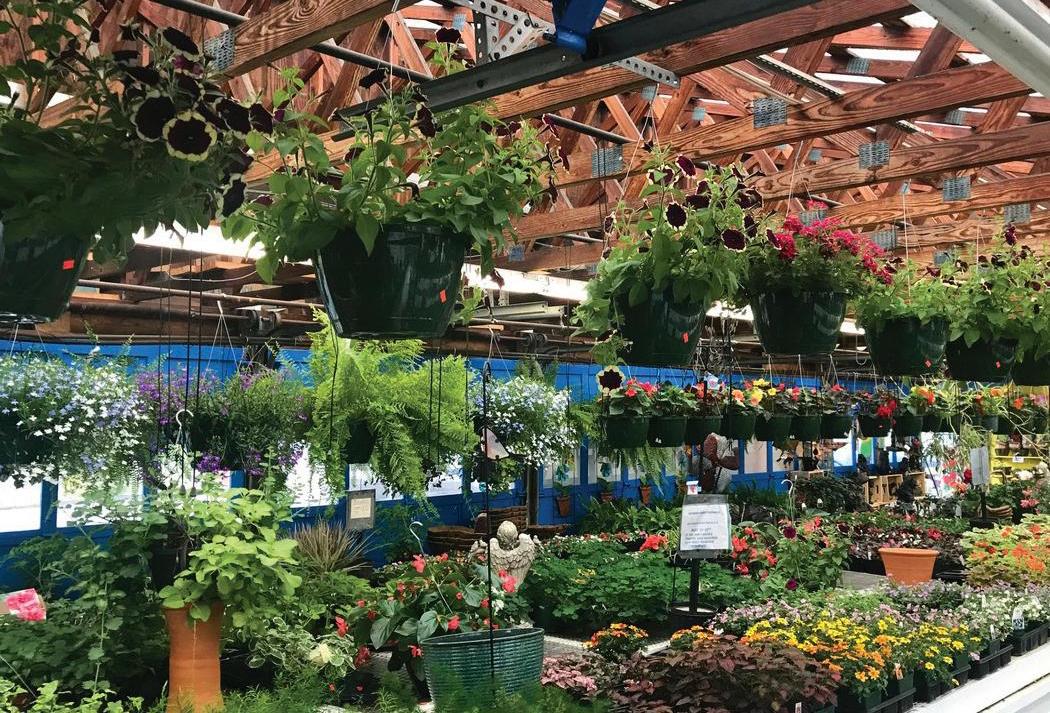

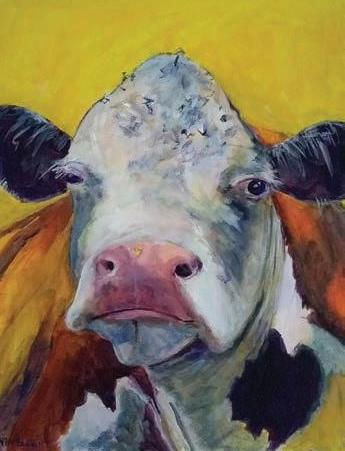
A work by Linda Blount.

Haywood ‘Juried Artist Exhibit’
The Haywood County Arts Council will host an upcoming exhibition featuring original art from 12 local artists.
The 2021 “Juried Artist Exhibit” will run through May 1. Each of the exhibiting artists went through an extensive jury process and they’re are delighted to have their work in the gallery.
Artists included in this exhibit: Joan Bazzel, Mel Bennett, Linda Blount, Barbara Brook, Melba Cooper, Wendelyn Cordwell, Mary Decker, Peggy Duncan, Gayle Haynie, Alice Herring, Ilene Kay, Jo Ridge Kelley, Betsy Meyer, Deb Parmele, Amy Shahparast, Jennifer Sharkey, Debbie Skelly, Cheryl Summey, and Lisa Townsend. www.haywoodarts.org.
Haywood celebrates Smokies flora
A “Call for Artwork” by the Haywood County Arts Council is currently underway. In May, the HCAC will be showcasing our beautiful native wildflowers, flowering shrubs, and trees in the exhibit: “Celebrating the Flora of the Smoky Mountains.”
Artists must highlight one to three flora subjects in their medium of choice. The plant must be native to the Smoky Mountain region. The representation can range from botanical illustrations to landscapes. However, the plant should be recognizable and included in the title of the piece.
Contracts are due April 9. For more information, click on www.haywoodarts.org/callfor-artists or pick up a copy at the HCAC in Waynesville. Email completed contract to gallerygifts@haywoodarts.org.
Interested in metal art?
A new grant from the Center for Craft is supporting an effort to share traditional metal working techniques with the western North Carolina community.
The grant was awarded to William Rogers of Rogers Metals and two Eastern Band of Cherokee Indians enrolled members who have been working with him for the past six years.
James Wolfe, from Big Cove, and Snowbird resident Nathan Bush met Rogers when he was teaching hammered copper on the Qualla Boundary. Now both former students will have a chance to extend their own experience to teaching.
The grant provides funding for a series of introductory workshops available to the community at no cost. The three-hour workshop courses will begin in late April and extend through May.
Each workshop is open to anyone interested in learning more about hammered copper or blacksmithing. Class openings are limited due to COVID protocols. A prospective student will work one-on-one to learn techniques of working either copper or steel from Wolfe and Bush, who will teach at Rogers Metals studio in Cullowhee.
Class space is extremely limited and will be filled on a first-come/first-serve basis. To sign up for a class, contact rogersmetals@gmail.com.
WNC Tomorrow Black Oral History Project
Western Carolina University’s Special and a Pullman porter on the railroad. He and Digital Collections at Hunter Library recalled starting a medical practice in 1941, has digitized a collection of interviews con- being drafted into World War II in 1942, ducted between 1986-1989 with Black resi- and how he returned to a very segregated dents from Western North Carolina, all of Asheville in 1946, where he continued pracwhom were older than 69 at the time. ticing medicine. Dr. Harrison died in 1992.
Recorded as part of the Western North Another example closer to WCU was Carolina Tomorrow Black Oral History Carrie Howell Scruggs (1909-2007) who disProject are memories of interactions during cussed attending Hill Street School in Sylva segregation, life in the mountains as a Black and Allen School in Asheville. Scruggs recalls person and the importance of church and church services, wakes and celebrating the school in the community. Their stories are of days spent sharecropping, service in the military and fighting in world wars, the civil rights movement and integration and other social changes in their lifetimes.
“We are very pleased to have the opportunity to offer interviews conducted by the Western North Carolina Tomorrow Black Oral History Project as part of Hunter Library’s Mount Zion African Methodist Episcopal Church in Cullowhee. Special and Digital Collections,” said Jason Brady, interim chief Fourth of July and Christmas. Scruggs also of Special and Digital Collections. “These remembers taking in washing and ironing, interviews give fascinating glimpses into the and her husband working in the tannery. The experiences of African Americans in Western collection also includes nine interviews with North Carolina through much of the 20th members of the Mount Zion African century and contribute to our goal of provid- Methodist Episcopal Church in Cullowhee. ing inclusive content to the study of the his- The hope, Brady said, is to further share tory and culture of Southern Appalachia.” documentation of the important contribu-
The recordings are of African American tions and historical experience of Black peoresidents who lived in Jackson, Swain, ple in WNC, which too often is largely Haywood, Cherokee and Buncombe coun- unknown and unrecorded. ties. An example is Dr. Howard Harrison, For more information, contact Hunter who was interviewed in 1987. Born in 1903 Library’s Special and Digital Collections at on Hill Street in Asheville, Harrison later 828.227.7474 or worked his way through college as a barber specialcollections@wcu.edu.

On the shelf It’s National Poetry Month: Join the party!


Time to party, everyone! Shel Silverstein? Who might not be moved
April is here, and along with warmer by some of Emily Dickinson’s verses, or weather, blossoms and flowers, and grass those of Dylan Thomas, or certain poems by grown green, April is National Poetry Langston Hughes? Month, and this year marks the 25th To those who this April may want to give anniversary of this celebration. poetry a try, here are some pointers.
Dreamed up by the Academy of First, I recommend starting with short American Poets back pieces, like “Dreams” by Langston Hughes: in 1996, this literary fest is now the largest in the world, involving millions of students and teachers, booksellers and publishers, and of course, poets. The Academy offers all sorts of resources Jeff Minick Writer and activities: virtual learning for the classroom, a poem delivered daily to your email, a Poetry and
Creative Mind Gala on April 29, and other helps to bring readers and poetry together.
Although poetry has made a bit of a comeback in recent years, the majority of
American adults report that they never read verse. Of course, they listen to it in music, and most parents of small children surely read nursery rhymes to their children, but they rarely read poems aimed at older men and women.
Doubtless, there are reasons for this neglect. Perhaps back in their high school literature classes they disliked the selections found in their textbooks or the way the teachers presented the material. Perhaps they’ve tried reading poems that made no sense to them or left them cold. More likely, the idea of reading poetry has simply never occurred to them.
I’ve had students and adults tell me they don’t like poetry, but what they really mean is they don’t like certain poems and poets. How could anyone dislike an entire realm of literature, a vast kingdom stretching from the ancient world up to our own time? Who could not find Robert Service’s “The Cremation of Sam McGee” funny or laugh aloud at some of the verbal antics of poet Hold fast to dreams For if dreams die Life is a broken-winged bird That cannot fly. Hold fast to dreams For when dreams go Life is a barren field Frozen with snow.
Here’s another short one, Edwin Markham’s “Preparedness,’ which is a particular favorite of mine:
For all your days prepare, And meet them ever alike: When you are the anvil, bear— When you are the hammer, strike.
Style is another consideration. Perhaps you prefer verse with rhythm and rhyme, as I do, to free verse. Perhaps you prefer the formality of a sonnet to the looser verse of a Walt Whitman or a Mary Oliver. Poetry is a promenade with as many styles as there are poets, and we can all surely find some in this vast choir of voices whose songs appeal to us. My own tastes are all over the board; I like the rollicking verses of Rudyard Kipling, the blank verse of Tennyson, the use of imagery by T.S. Eliot in so many of his pieces.
Finally, like literature written for the stage, poets mean their work to be read aloud and performed. They write for the ear as well as for the eye, perhaps even more so, and for the tongue as well. They want us to hear and taste their words instead of seeing them only as objects on a piece of paper.
We can bring those words to life when we read poetry to our young people. Nursery rhymes, historical pieces like “The Midnight Ride of Paul Revere” or “The Charge of the Light Brigade,” humorous poems like “I Never Saw a Purple Cow” or Lewis Carroll’s “Jabberwocky:” we can make these readings fun and memorable by going a bit overboard, becoming amateur actors enthusiastically adding sparks and pizzazz to the poems.
That verse becomes more powerful when read aloud can be seen in numerous offerings online. There we can listen, for example to Johnny Cash reading “The Cremation of Sam McGee” or to some of the various readers of Kipling’s “ The God of the Copybook Headings.” There, too, we can find poets of the last 100 years reading from their own work: Robert Frost, Edna St. Vincent Millay, even an old wax recording done by Walt Whitman.
Some may still wonder: Why read poetry at all?
Well, there are many reasons: amusement, edification, a love of the tumble and whir of words and lines. But a central reason to acquaint ourselves with this ancient art form has to do with our humanity. Poetry broadens and deepens our hearts and souls.
In the movie “Dead Poets Society,” literature teacher Mr. Keating (Robin Williams) orders his students to “huddle up” in the classroom, kneels among them, and gives them these words of wisdom: “We don’t read and write poetry because it’s cute. We read and write poetry because we are members of the human race. And the human race is filled with passion. Medicine, law, business, engineering — these are noble pursuits and necessary to sustain life. But poetry, beauty, romance, love: these are what we stay alive for.”
Mr. Keating nails it. Try some poetry this month, some food for the soul. After the events of this past year, heaven knows we can use all the nourishment we can get. (Jeff Minick reviews books and has written four of his own: two novels, Amanda Bell and Dust
On Their Wings, and two works of nonfiction,
Learning As I Go and Movies Make the Man. minick0301@gmail.com)

Calling all Macon County authors
The Arts Council of Macon County is creating a literary publication to showcase the talents of Macon County’s many published authors. It will be released this summer, free for distribution and available in print and digital form.
The purpose of the publication is to promote local authors by exposing them to a wider readership, and to allow community members and visitors to sample the works of many writers in one tabloid-style publication.
The only eligibility requirements are that authors be Macon County residents aged 18 or older, and that content be appropriate for readers of all ages.
To be included, submit one excerpt from your favorite published work (may be fiction or nonfiction, from a book, magazine or newspaper), with a 500word minimum, and approximately 1,000-word maximum. Provide the work’s name, publication date, and publisher.
Include your name, mailing address, email address, and phone number, plus a 200-word bio. Deadline is May 15, 2021. Send hard copy submissions to The Art Council, PO Box 726, Franklin, NC 28744, and electronic submissions to arts4all@dnet.net. There is no entry fee.
The Arts Council intends this to be an ongoing publication, in the same vein as The Wayah Review, a compilation of essays, poems, and visual arts works published by the Council from 1980 until 1992, edited by Barbara McRae.
While poets aren’t included in the 2021 publication, future editions will focus on different art forms, from poetry to visual arts to oral history and beyond.
If you have questions about this exciting project, contact the Arts Council, art4all@dnet.net or 828.524.ARTS.
Get Out & Read!



Magazines - Newspapers 428 HAZELWOOD Ave.
Waynesville • 456-6000 MON-FRI 9-5:30 | SAT 9-3
Now Accepting New Patients!
Specializing in Pediatric Dentistry for Infants, Kids, Special Needs &Teens
Drs. Chambers, Baechtold, Haldeman, Pratt, Chambers, Hogue, Blackman, Wyble & Chadwick
Orthodontic Specialists for Kids,Teens &Adults Asheville 828-274-8822 Waynesville 828-407-4034 Sylva 828-586-9333 Reynolds Mountain 828-785-5825
BeGreatDental.com


